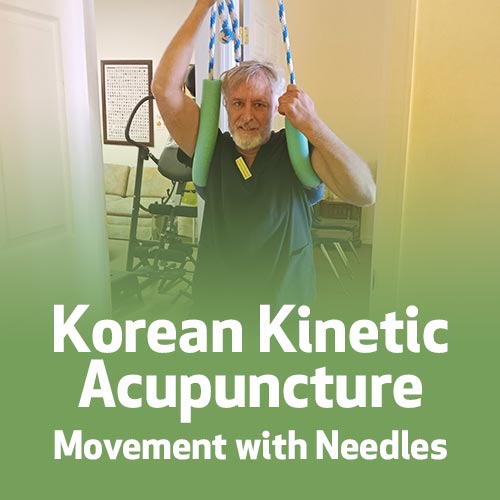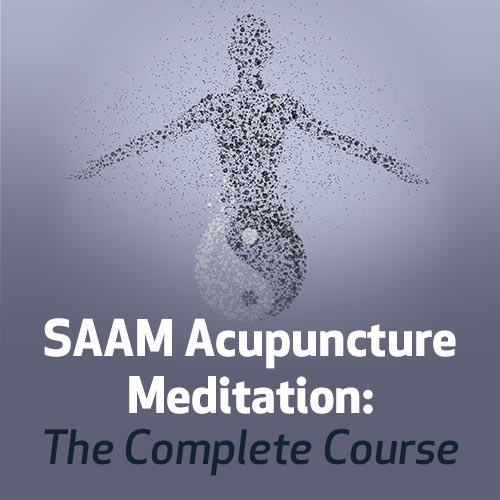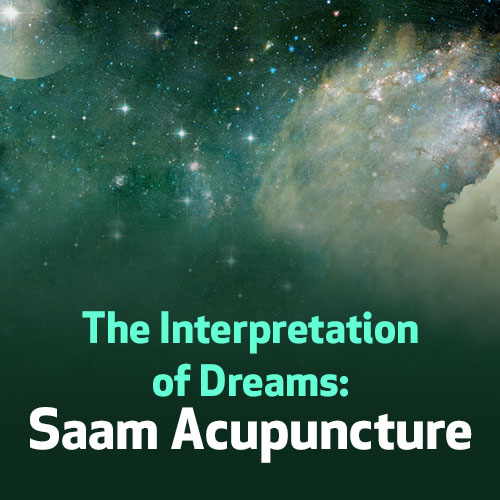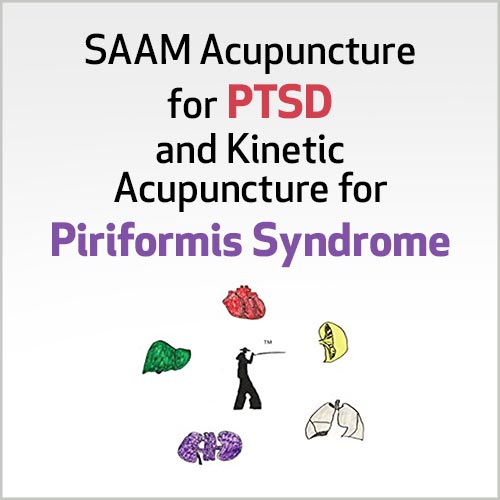Treating Grief with Saam Acupuncture and Meditation
Abstract
This is an introduction for the treatment of grief using a traditional Korean Acupuncture protocol. Saam Acupuncture / Meditation is use of meditation upon the acupuncture point prescription of Saam’s Lung channel to engage and direct the patient’s mind in channeling grief. The author has found this to be highly effective for remedying pathological grief as it gives control to the patient to meditate upon the acupuncture points both in and out of clinic when grief overwhelms.
Introduction
In Acupuncture Medicine Theory grief and sadness are emotions attributed to the Lungs. In theory the Lungs house the mortal corporal soul which is born at one’s first breathe and dies at the last breath (as opposed to the immortal ethereal soul housed in the Liver). This sense of mortality and loss is the reason grief and sadness are attributed emotional factors of the Lungs.
Saam Acupuncture / Meditation is a Korean traditional technique dating back to its namesake founder ‘Monk Saam’ of Chosun Dynasty 16th century Korean. According to legend Saam meditated in a cave for 13 years and discovered the mystery of acupuncture. Thus Saam meaning ‘cave dweller’ is the moniker for this otherwise little known high priest and physician. Saam’s Acupuncture / Meditation technique nearly lost to history was revived in 1980’s Korea, becoming a popularly used technique worldwide today.
It is the author’s opinion that Saam meditated upon the energetics of Qi (a central major theory of Acupuncture Medicine) at the acupuncture points of the entire body. This would include acupuncture points from the elbows and knees to the fingers and toes, hands and feet. It is the acupuncture points in these areas of the body that comprise modern Saam Acupuncture which is also known as the Korean Four Needle Technique.
Modern Saam Acupuncture Theory includes the Three Levels of Human Needs in which each of the three levels of human needs are associated with specific organs and channels. The first level of human needs is the need for material possessions and establishment of one’s homeland. This first level human need is attributed to the Lungs. One’s homeland includes the tools and possessions needed to maintain that homeland as well as family and members of community who make up that homeland. The inevitable, eventual loss of every component of one’s homeland through death is the driving force of grief affecting and attributed to the Lungs.
A Pathology of Grief
Pathological grief is a problem that can diminish Lung function and threaten the health and well being of the individual sufferer. Pathological grief includes the imagined death of beloved friends and family before their passing, and prolonged rumination afterwards.
One aspect of how grief can potentially harm the Lungs is through the effects of sobbing and prolonged crying. Generally, sobbing occurs with visible phlegm such as tears and runny nose. Phlegm obstructing the nasal passages renders breathing through the nose difficult or impossible. Harmful environmental particles are more effectively filtered out through the nasal passages than through the mouth. Thus the grief stricken individual who engages in prolonged mouth breathing may be exposing the Lungs to harmful particles.
In Acupuncture Theory the Lungs are a Qi generating organ. They generate Qi (the body’s energetic component) through respiration of Oxygen and Carbon Dioxide. For immune function and health the Lung’s circulate Qi at the skin level which is known as Defensive Qi. When Defensive Qi is strong, exterior pathogens can be expelled at the ‘skin level’ (most superficial, exterior part of body) which prohibits the pathogen from entering deeper into the body. An example of invasion by a cold pathogen first affecting the body is the occurrence of chills. The skin may get ‘goose bumps’ and the body may momentarily shudder. If Lung Defensive Qi is strong this cold pathogen is expelled at the skin level and goes no further. If Lung Defensive Qi is weak a sore or scratchy throat with sneezing may develop within 24 hours (these are attributes of Lung). Next accumulation of clear moist phlegm present (attributes of cold pathogen) and the common cold with cough ensues. If immunity is weak the cold pathogen may go deeper into the body affecting in particular the Stomach with Flu.
Thus is one danger of prolonged grief affecting health, Lung Qi diminishes and immune vulnerability to pathogen increases.
Channeling Grief with Saam Acupuncture Meditation.
It is the author’s assumption that grief and sobbing expend great amounts of Qi energy, which if not channeled or replenished presents danger. It is helpful in therapy to imagine sobbing, as coming in waves of Qi. The Saam acupuncturist in therapy should always try to incorporate the patient’s mind with the treatment. This is done by educating patient of the above mentioned principles and encouraging them to use meditation with and after therapy. Meditation specifically upon the Saam Acupuncture point prescriptions of the Lung channel.
This graph indicates the Saam Acupuncture point prescriptions using what the author calls a Harmonized Combination. On the patients left side is the Saam Acupuncture; Four Needle Point prescription of the Lung tonification technique, supported by the Urinary Bladder technique on the right. Also used is the front influential points of these two channels.
The Lung channel on the left side is the primary channel used, supported by the Urinary Bladder right side. On the Lung channel, points #1 and #2 (being the tonifying points) of the four needle technique are the Chief points. The greatest emphasis is placed on these points with needle stimulation by the practitioner and meditation and focus of the patient. Points #3 and #4 are the sedating points and have secondary emphasis.
In preparation for the treatment the patient is coached to bring their attention and meditational focus to points #1 and #2. They are asked to recall their grief and channel the energy (Qi) of that grief to these points. This is signified by the line drawn in the graph from the head to these points. The author uses a three breath technique with needle stimulation to bring the patient’s attention and focus to these points (elaborated in the book “Saam Medical Meditation”).
After the treatment the patient is asked to remember these meditational points of focus, so that when grief comes they can channel its energy to these points. In a sense the patient is asked to channel the energy (Qi) of grief so that it is not expended, but rather preserved.
This technique with Saam Acupuncture Meditation is one of the instances in acupuncture where a standardized point prescription works regardless of patient idiosynchrasies. Other instances of a standardized treatment with Saam Acupuncture Meditation are equivalent emotional psychological issues such as PTSD or Dr. John Sarno’s ‘unconscious rage’. When Grief is the chief complaint of the patient this is the point prescription that can be used without much variance.
Other Courses By This Teacher






Korean Kinetic Acupuncture, Movement with Needles
Acupuncture's Next Generation Trigger Point Protocol
with Evan Mahoney
See In StoreOverview
Please Note: This course is presented in a reading-first format, where the teacher walks you through and explores a body of written work.
This 6 hour course will help you master Muscle Tendon Pain and Pathology. Featuring the Korean protocols of VST (Vertex Synchronizing T) and Kinetic Acupuncture. Taught be Dr. Evan Mahoney, student of both Dr.'s Jonghwa Lee and Hyungsuk Choi.
This class features Dr. Jonghwa Lee's VST Acupuncture which is a trigger point protocol based on Range of Motion Analysis and muscle shortening affecting (in this video) the neck and shoulder, lower back and hip vertexes.
We feature all the range of motion tests and identified shortened muscles needed to be treated with VST acupuncture. The student will learn and understand agonist and particularly antagonist muscles and how they affect alignment of joint, structures, and tensegrity. The student will also learn the many pathologies of muscle shortening due to presence of knots (trigger points) in the muscles.
Featuring also Dr. Hyungsuk Choi's Kinetic Acupuncture the student will learn how to treat trigger point pathology using movement exercises with acupuncture needles in place. This class features Kinetic Acupuncture procedures for the hands, wrists, fingers, elbows, shoulders, neck, toes, ankles, feet, knees, hips (lateral and medial), and lower back.
Using these protocols the student will become a master of pain and pathology. The student's confidence, skill, and reputation will be enhanced as they deliver on their favorable prognosis given to patients, thanks to these procedures.
Learning Objectives
- The student will be able to identify structural imbalance to to muscle trigger points.
- The student will understand how trigger points (knots) in muscles leads to pain and pathology.
- The student will be able to treat structural imbalance by using trigger point strategies of VST and Kinetic Acupuncture.
- The student will improve their diagnostic and prognostic abilities to further gain confidence, esteem, and reputation in the eyes of their patients.
- The student will understand the mechanism of Agonist and Antagonist in muscle movements.
Your Teacher

Evan Mahoney
Evan Mahoney is a Doctor of Acupuncture and Oriental Medicine. Author of the Saam Medical Meditation Book series and Korean Kinetic Acupuncture Trigger Point Acupuncture series.
Categories
Tags
Overview
Please Note: This course is presented in a reading-first format, where the teacher walks you through and explores a body of written work.
Saam Acupuncture Meditation incorporates Carl Jung and Sigmund Freud in understanding and treating the psychological, emotional, and spiritual self. Saam Acupuncture affords breakthroughs in relating to consciousness and unconsciousness as represented by PTSD (Post Traumatic Stress Disorder), Dr. John Sarno’s ‘Unconscious Rage” (and hauntings), and the interpretation of Dreams, vis a vis Saam's Three Levels of Human Needs.
This class teaches Saam's Harmonized Combinations derived from the I Ching and its application using Dr. Richard Tan's Balance Method System, especially with the pic graphs used for headaches. Saam's Harmonized Combinations can be used with Tan's Balance Method system to treat any internal illness or pain area on the body.
Incorporate meditation with your treatments by having the patient meditate upon the tonification points of the Saam Point Prescriptions. With the Triangulation method, we bring the patient out of their mind while still being in the body. By meditation on the distant points of Saam, we can effectively stretch and move Qi, and provide a great and comfortable meditative treatment for the patient.
The Part 5 Posterboard section of the video offers excellent and clear diagrams of the methods for these conditions and more such as an outstanding "Overthinking" meditation.
This is not only for the patient but for the practitioner to experience through feeling Qi and meditating on the Saam Points.
Learning Objectives
- Learn Saam's Three Levels of Human Needs.
- Learn conscious (PTSD) vs. unconsciousness (Dr. John Sarno Unconscious Rage).
- Learn how to apply Saam's Harmonized Combinations for Headaches, using Dr. Tan's Balance Method.
- Learn Interpretation of Dreams based on Saam's Three Levels of Human Needs.
- Learn Saam Acupuncture's Harmonized Combinations.
Your Teacher

Evan Mahoney
Evan Mahoney is a Doctor of Acupuncture and Oriental Medicine. Author of the Saam Medical Meditation Book series and Korean Kinetic Acupuncture Trigger Point Acupuncture series.
Categories
Tags
The Interpretation of Dreams: Saam Acupuncture
Dr. Richard Tan Balance Method application for Headaches using SAAM Acupuncture
with Evan Mahoney
See In StoreOverview
The Interpretation of Dreams according to Saam Acupuncture's 'Three Levels of Human Needs' (a Five Element application).
This class presents a fascinating study into the Interpretation of Dreams as part of Saam Acupuncture's 'Organ Centered Consciousness' model. PTSD and Unconscious Rage were previously presented as part of the 'OCC' Model. See class titled "Saam Acupuncture for PTSD and Kinetic Acupuncture for Piriformis Syndrome". With 'Dreams', this class completes our understanding of consciousness and unconsciousness.
After watching and studying the practitioner will gain the ability to interpret and treat according to the dreams of their patients as well as to meditate and act upon their own dreams.
Saam Acupuncture's Interpretation of Dreams tells you "where you are in life, where you want to go, and if you've gone too far". In accordance with the principle of Qi being a propulsive form of growth and healing, and brain neuroplasticity, the Interpretation of Dreams helps lead one to their fullest destiny in health and satisfaction. Using Saam Acupuncture and meditation, one is able to both interpret their dreams and act on their dreams.
Also introduced in the class is the "Interpretation of Dreams Study" which is a research paper and template that affords the research student many avenues for research into this subject.
This class also teaches how Saam Acupuncture can be applied with Dr. Richard Tan's Balance Method to treat Headaches.
Learning Objectives
- Learn Saam Acupuncture's Three Levels of Human Needs according to each organ.
- Learn Saam Acupuncture Harmonized Combinations for Headaches using Dr. Richard Tan Balance Method.
- Identifying the Three Levels of Human Needs in Dream Interpretation.
- Learn Saam Acupuncture's Organ Centered Consciousness Model.
Your Teacher

Evan Mahoney
Evan Mahoney is a Doctor of Acupuncture and Oriental Medicine. Author of the Saam Medical Meditation Book series and Korean Kinetic Acupuncture Trigger Point Acupuncture series.
